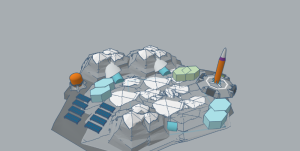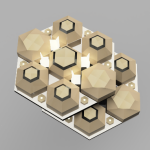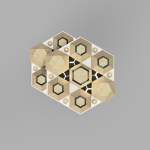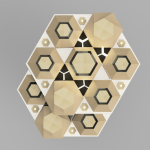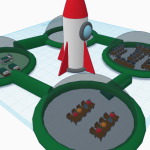Moon- Our second home by Lunar Celts
St Marks Senior National School Dublin-Ireland Ireland 10 years old 1 / 0 English Moon
Project description
Why Should we go to Moon :
We should go to Moon for multiple reasons such as the following :
Scientific Exploration: The Moon holds valuable scientific insights into the early history of the solar system and the Earth-Moon system. By studying lunar rocks, soil, and surface features, scientists can better understand planetary formation, the evolution of the Moon, and the processes that shaped our own planet.
Resource Exploration: The Moon is believed to contain valuable resources such as water ice, which could be extracted and used to sustain human life and support future space exploration missions. Water can be split into hydrogen and oxygen, providing essential resources for life support, propulsion, and manufacturing processes in space.
Technological Development: Returning to the Moon provides an opportunity to develop and test new technologies and systems for space exploration and colonization. These include advanced propulsion systems, habitat designs, resource extraction techniques, and autonomous robotics.
Commercial Opportunities: The Moon offers potential commercial opportunities, including lunar tourism, mining of lunar resources, and providing services to support future space missions. Private companies are investing in lunar exploration and settlement, driving innovation and economic growth in the space sector.
Human Settlement: Establishing a sustained human presence on the Moon could serve as a stepping stone for further exploration of the solar system, including missions to Mars and beyond. Learning to live and work on the Moon would provide valuable experience and knowledge for future long-duration space missions.
Where are we setting up the base station?
Shackleton Crater, located near the lunar south pole, which is believed to contain large deposits of water ice. This location offer access to resources and sunlight, making them prime candidates for a moon base. Another consideration is sunlight availability. Areas near the lunar poles experience long periods of sunlight, allowing for continuous solar power generation. Additionally, the terrain is relatively flat and stable to facilitate construction and operations.
How do you create sustenance of Life on Moon ?
Growing plants on the Moon to produce oxygen could be a crucial aspect of sustaining human habitation on a moon base. Several types of plants are well-suited for this purpose due to their ability to perform photosynthesis, where they use sunlight to convert carbon dioxide into oxygen. Some plants are particularly efficient at this process and are relatively easy to grow in controlled environments. Here are a few examples:
Algae: Certain types of algae, such as spirulina and chlorella, are excellent oxygen producers and can grow in a variety of environments, including water-based systems. Algae are also rich in nutrients and could serve as a food source for astronauts.
Leafy Greens: Plants like lettuce, spinach, and kale are relatively fast-growing and efficient at producing oxygen through photosynthesis. They are also rich in vitamins and minerals, making them valuable for a balanced diet in space.
Herbs: Plants like basil, mint, and parsley are compact, fast-growing, and can thrive in controlled environments. They produce oxygen while also providing flavor and variety to astronauts’ meals.
Wheatgrass: Wheatgrass is a fast-growing grass that is rich in oxygen and nutrients. It can be juiced for consumption or used as a supplement to other foods.
Microgreens: Microgreens are young, tender greens harvested at an early stage of growth. They are highly nutritious and can be grown quickly in small spaces, making them suitable for space gardening.
In addition to producing oxygen, these plants could also help regulate carbon dioxide levels, provide fresh food for astronauts, and contribute to psychological well-being by creating a more natural environment in space.
How to obtain water on Moon Surface?
Te icy lunar regolith(Moon Soil) is drilled locally, and then the drill rod is heated by a thermal method to drive water to evaporate from the regolith. The water vapor is condensed in a closed loop and liquid water is collected.
Setting Up power system in Moon.
Solar panels could be deployed on the lunar surface to harness sunlight and convert it into electricity. The Moon receives nearly constant sunlight, except during lunar eclipses, making solar power a reliable and renewable energy source. Arrays of solar panels could be installed on the surface or on structures like habitats or rovers to generate electricity.
Nuclear Power: Small nuclear reactors could provide a continuous and reliable source of power for a lunar base. These reactors could use radioisotope thermoelectric generators (RTGs) or small fission reactors to generate electricity. Nuclear power could be especially useful during the lunar night when solar power is unavailable.
Overall Setting up a Moon Base station will help Human kind to advance the human endeavor to be a multi-planetary species and explore the universe.
#3D Design
Other Projects



